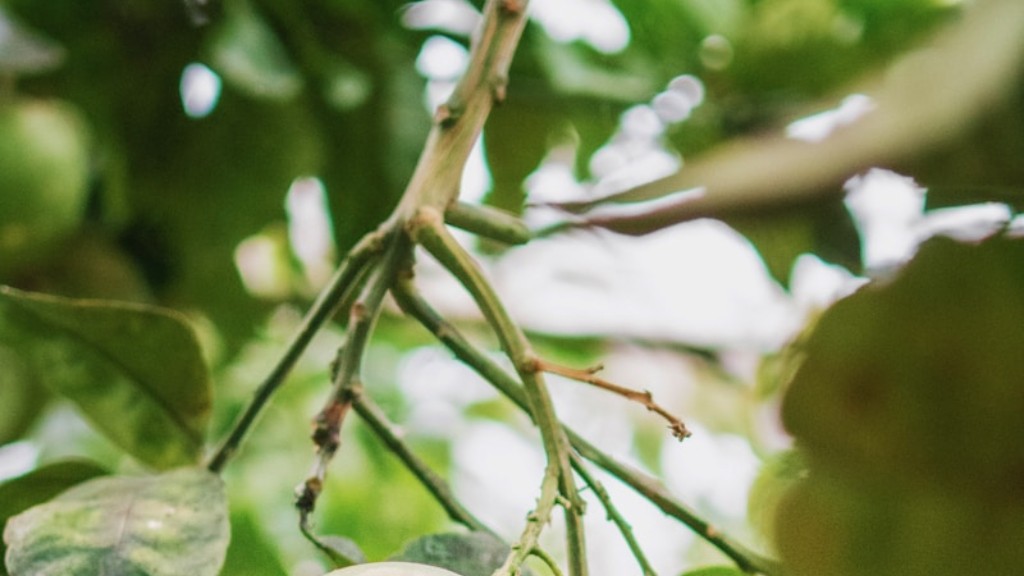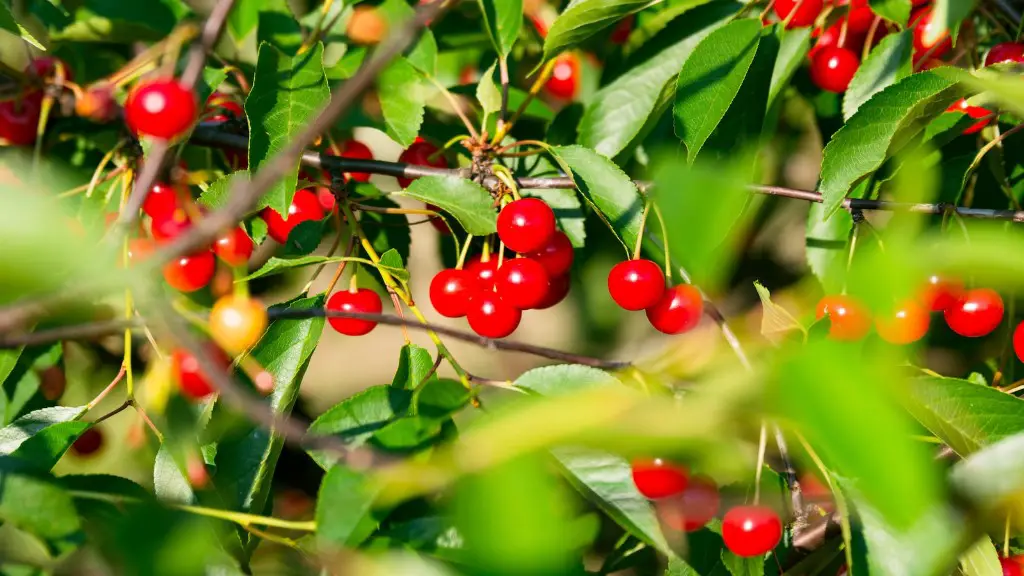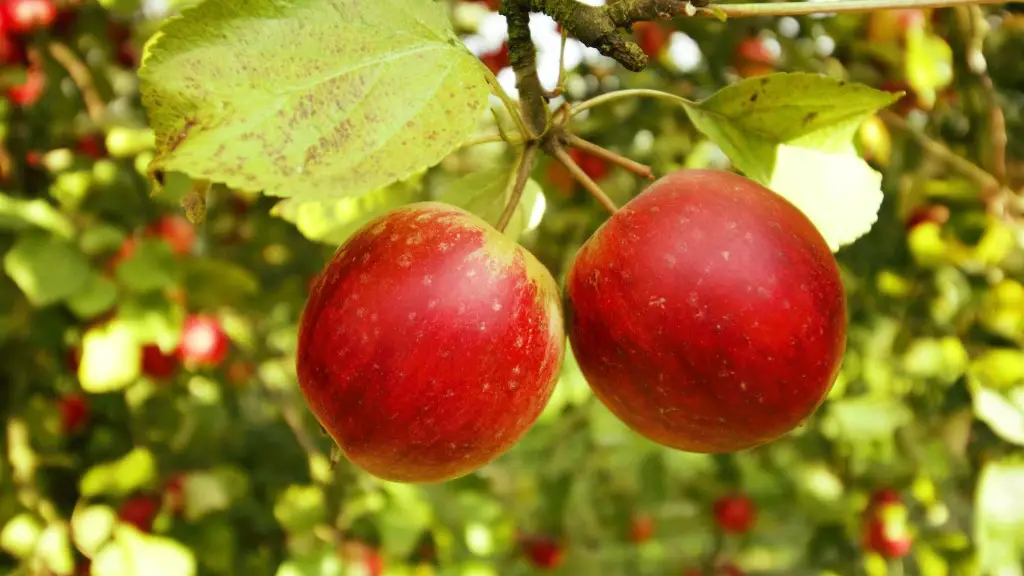Palm trees are a favorite houseplant for many home decorators. They are a sophisticated choice and add a tropical feel to any room. Taking care of a palm tree houseplant is fairly easy, once you understand its needs and the right tools to use. In this article, we will discuss the basics of palm tree care, and offer some tips and tricks to get the best out of your tree.
Watering
Water is the most important factor when caring for a palm tree. The amount of water needed depends on the variety of palm, so it is best to check the tag that came with the plant. Generally speaking, a palm tree should be watered once a week during the growing season, and every other week during the winter. Too much water can lead to fungus, so it is important to not over-water. If the soil is kept moist but not wet, the palm should thrive.
Location
Palm trees need plenty of light to grow. A window with lots of sun is ideal for most varieties. However, too much sun can be damaging. If the leaves begins to yellow or burn, try moving it to a spot with less sun. It would also be a good idea to rotate the tree periodically, to ensure that it is getting light from all angles. To get the most out of your tree, regular check-ins and adjustments to the location are recommended.
Soil
The soil used to grow a palm tree is important. It should be loose, well-draining, and rich in organic matter. Some experts also recommend adding a layer of mulch to the topsoil. This will help to retain moisture and keep the roots cool. Regularly inspect the soil to make sure it is not too wet or too dry.
Fertilizing
Like most plants, a palm tree needs to be fertilized. It is best to use a slow-release liquid fertilizer in the summer and a slow-release granular fertilizer in the winter. This will ensure that the tree has access to all the essential nutrients it needs. If the leaves are yellow, this may be a sign of a nutrient deficiency.
Pruning
Palm trees may require pruning from time to time. If the leaves appear to be dead, discolored, or wilting, it is a good idea to trim them off. This will allow the healthy leaves to get more light and help the tree focus on its growth. It is best to prune the tree in the spring or summer, as the growing season is when the tree will benefit the most.
Pests and Diseases
Like any other houseplant, a palm tree is susceptible to pests and diseases. To keep the plant healthy, it is important to regularly inspect it for any signs of infestation. Common pests such as mealybugs and spider mites can be treated with an insecticidal soap. Diseases can be treated with fungicides. If any of these problems persists, seek professional advice.
Transplanting
If your palm tree has outgrown the pot it is currently in, it may need to be transplanted. This should be done with caution. Be sure to use a pot that is at least twice the size of the current one and use a potting mix specifically formulated for palm trees. Make sure the pot has drainage holes and that the roots are not too crowded. Once the tree is replanted, monitor the watering and soil to make sure it is getting everything it needs.
Frequent Questions
A common question from new palm tree owners is, “Do I need to fertilize every year?” The short answer is: yes. Fertilizing every year is recommended, as it will ensure that your tree has all the nutrients it needs to stay healthy. This should be done in the spring or summer for best results.
Common Mistakes
One of the most common mistakes people make when caring for a palm tree is to overwater. Too much water can lead to root rot and other damage to the tree. It is also important not to underwater, as this will cause the leaves to become yellow and wilted. Monitor the soil and adjust the watering schedule to make sure the tree has just enough.
Using Tools
In addition to the basic necessities, there are some tools and products you can use to make the job of caring for a palm tree easier. Methods like misting can help to provide adequate moisture, while fertilizers and mulches can provide the necessary nutrients. There are even self-contained watering systems that will ensure your tree never becomes dehydrated.
Proper Care
Taking proper care of a palm tree houseplant will help it thrive for years to come. The key to success is to monitor the environment and make adjustments as needed. By following a few basic principles and having the right tools on hand, you can keep your palm looking its best.
Climate Control
Different varieties of palm tree have different temperature requirements. Knowing the palm’s temperature range and keeping it in an area where temperature never exceeds or drops below these levels is an important part of proper palm care. In addition, it is recommended to mist regularly with warm water and check the humidity level of the room. An ideal humidity level should be between 40-60%.
Regular Maintenance
Cleaning and trimming are also important steps when caring for a palm tree. Being able to clean off any dust, dead leaves, and spider webs will help the palm tree stay healthy. Trimming should be done if any leaves start to turn yellow or if they are too long, making sure to leave at least three leaves on each branch. To help promote healthy growth, it is a good idea to lightly prune the fronds and roots every six months.
Protecting From Pests
Pests can be a problem for palm trees, so it is important to take steps to protect it from any infestations. It helps to keep the plant clean, as pests are attracted to dirt and debris. Generally, a solution of neem oil and water can be used to create a safe insect repellent that won’t harm the palm tree. If an infestation does occur, it is important to take the proper steps to treat the problem without putting the tree in danger.
Fertilizing Tips
Fertilizing a palm tree is important in order to keep it healthy and growing. Generally, applying fertilizer to a mature tree every two to three months is sufficient to provide it with the nutrients it needs. A weak solution of nitrogen should be used, and the fertilizer should be applied directly to the soil rather than to the palm’s leaves. Additionally, it can be beneficial to add a few handfuls of compost to the soil every few months as well.
Insect Repellents
Insects can be a nuisance for palm trees, and it is important to take steps to keep them away. Some natural insect repellents can be used, like garlic oil and citrus essential oils. If a more commercial solution is needed, insecticidal soaps or neem oil can be used. It is important to dilute these solutions, as they can be damaging to the tree’s leaves.
Providing Shade
Palm trees rarely need shade, however, some varieties may be more sensitive to bright light. If the palm tree is placed in a sunny corner, providing it with some shade can help it thrive. Sun louver blinds, window blinds, or even a thin fabric can be used to protect the tree from direct sunlight and keep it from overheating or drying out.




